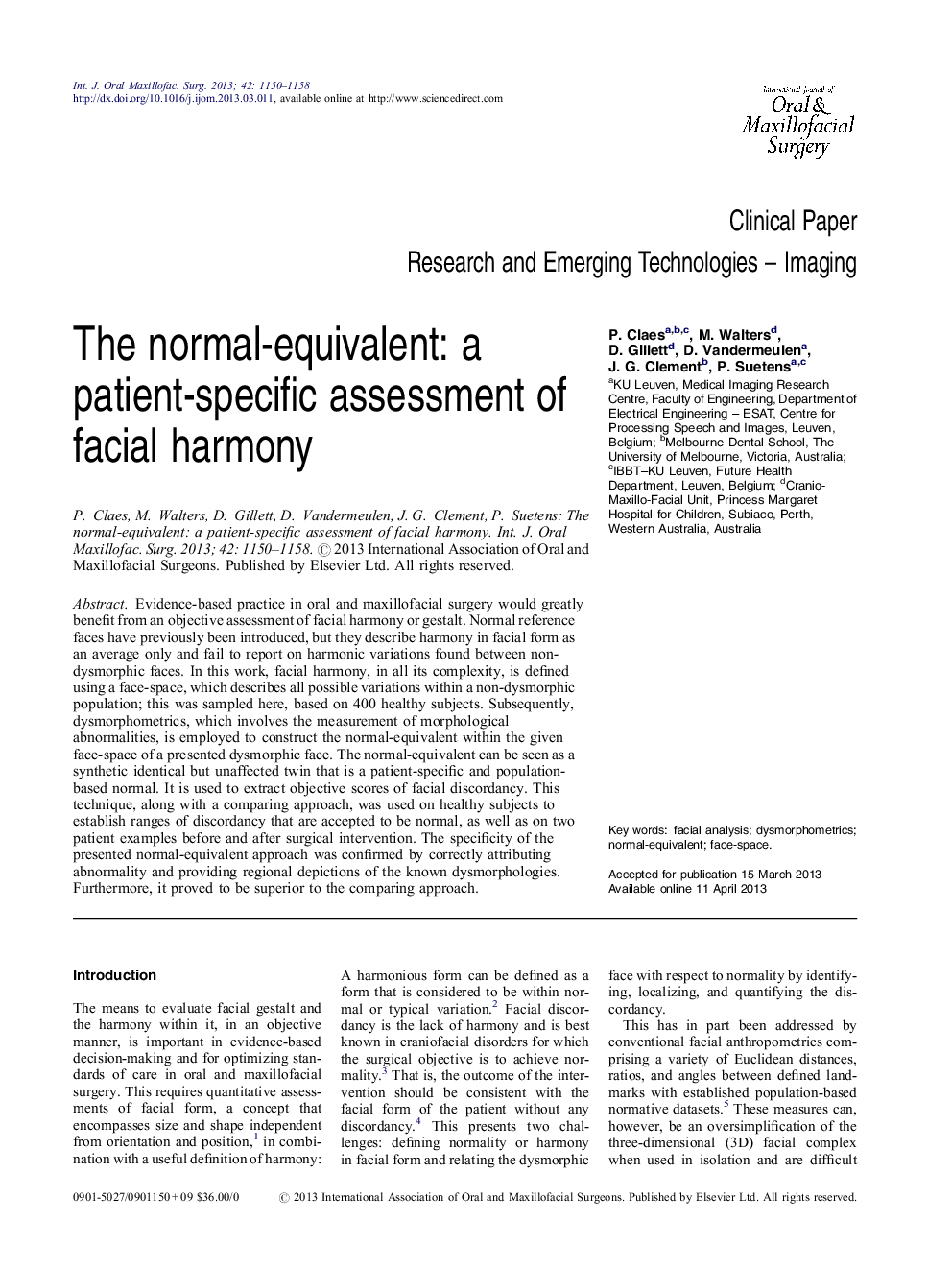| Article ID | Journal | Published Year | Pages | File Type |
|---|---|---|---|---|
| 3132983 | International Journal of Oral and Maxillofacial Surgery | 2013 | 9 Pages |
Evidence-based practice in oral and maxillofacial surgery would greatly benefit from an objective assessment of facial harmony or gestalt. Normal reference faces have previously been introduced, but they describe harmony in facial form as an average only and fail to report on harmonic variations found between non-dysmorphic faces. In this work, facial harmony, in all its complexity, is defined using a face-space, which describes all possible variations within a non-dysmorphic population; this was sampled here, based on 400 healthy subjects. Subsequently, dysmorphometrics, which involves the measurement of morphological abnormalities, is employed to construct the normal-equivalent within the given face-space of a presented dysmorphic face. The normal-equivalent can be seen as a synthetic identical but unaffected twin that is a patient-specific and population-based normal. It is used to extract objective scores of facial discordancy. This technique, along with a comparing approach, was used on healthy subjects to establish ranges of discordancy that are accepted to be normal, as well as on two patient examples before and after surgical intervention. The specificity of the presented normal-equivalent approach was confirmed by correctly attributing abnormality and providing regional depictions of the known dysmorphologies. Furthermore, it proved to be superior to the comparing approach.
